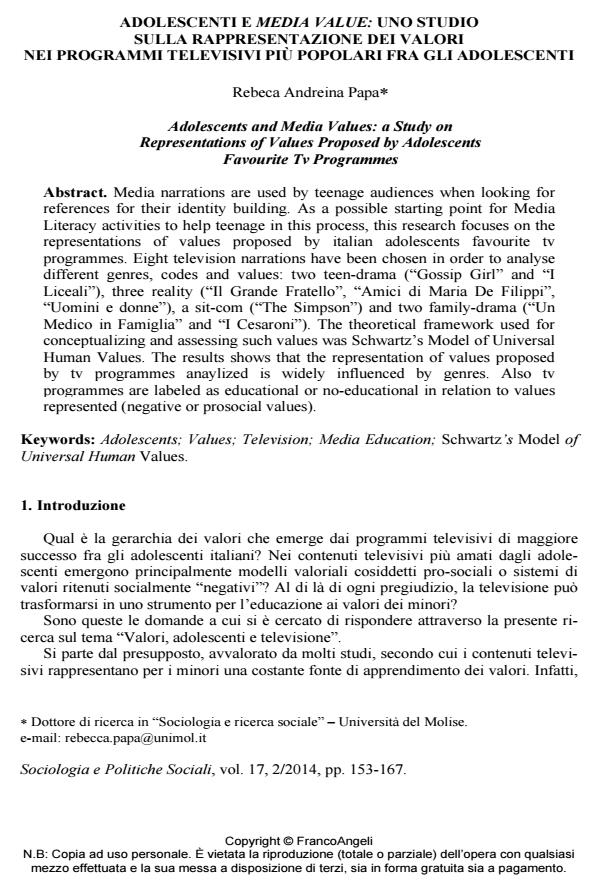Adolescenti e media value: uno studio sulla rappresentazione dei valori nei programmi televisivi più popolari fra gli adolescenti
Titolo Rivista SOCIOLOGIA E POLITICHE SOCIALI
Autori/Curatori Maria Angela Polesana
Anno di pubblicazione 2014 Fascicolo 2014/2
Lingua Italiano Numero pagine 15 P. 153-167 Dimensione file 134 KB
DOI 10.3280/SP2014-002010
Il DOI è il codice a barre della proprietà intellettuale: per saperne di più
clicca qui
Qui sotto puoi vedere in anteprima la prima pagina di questo articolo.
Se questo articolo ti interessa, lo puoi acquistare (e scaricare in formato pdf) seguendo le facili indicazioni per acquistare il download credit. Acquista Download Credits per scaricare questo Articolo in formato PDF

FrancoAngeli è membro della Publishers International Linking Association, Inc (PILA)associazione indipendente e non profit per facilitare (attraverso i servizi tecnologici implementati da CrossRef.org) l’accesso degli studiosi ai contenuti digitali nelle pubblicazioni professionali e scientifiche
Media narrations are used by teenage audiences when looking for references for their identity building. As a possible starting point for Media Literacy activities to help teenage in this process, this research focuses on the representations of values proposed by italian adolescents favourite tv programmes. Eight television narrations have been chosen in order to analyse different genres, codes and values: two teen-drama ("Gossip Girl" and "I Liceali"), three reality ("Il Grande Fratello", "Amici di Maria De Filippi", "Uomini e donne"), a sit-com ("The Simpson") and two family-drama ("Un Medico in Famiglia" and "I Cesaroni"). The theoretical framework used for conceptualizing and assessing such values was Schwartz’s Model of Universal Human Values. The results shows that the representation of values proposed by tv programmes anaylized is widely influenced by genres. Also tv programmes are labeled as educational or no-educational in relation to values represented (negative or prosocial values).
Parole chiave:Adolescents; Values; Television; Media Education; Schwartz’s Model of Universal Human Values
Maria Angela Polesana, Adolescenti e media value: uno studio sulla rappresentazione dei valori nei programmi televisivi più popolari fra gli adolescenti in "SOCIOLOGIA E POLITICHE SOCIALI" 2/2014, pp 153-167, DOI: 10.3280/SP2014-002010